Our union long ago became the path for millions of men and women to create a decent life for their families and train for success and safety in an ever-changing industry.
On anniversaries we think about how much things have changed and what has stayed the same. We know we still face adversity that isn’t so different from challenges of the past. We still have to fight hard for good contracts and against the greed that has allowed construction industry tax fraud to explode
We work with more sophisticated tools than ever before as technology evolves on the jobsite and within the union. But we still swing hammers, hang drywall, tune turbines, build foundations and a variety of other work.
This year we celebrate the UBC’s 140th anniversary and we remember what it took just to survive, as a union, from one year to the next. It took a focus on the things we have in common, a recognition that we are stronger when we are together—and a determination to stay united.
Visit this page regularly in 2021 for stories from the UBC’s proud history.
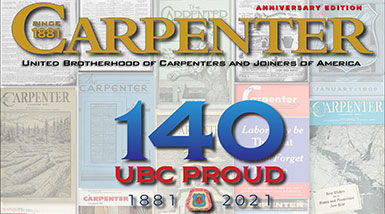
To commemorate our 140th anniversary year, see this special compilation of all the Carpenter magazine historical coverage from 2021.
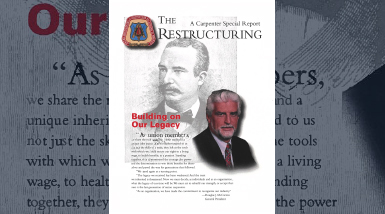
In 1995, A Pivot Point
The founding members of our union left a legacy of excellence, as skilled carpenters and as carpenter-to-carpenter organizers dedicated to creating a union that would stand the test of time.
Industry-best training, good wages, a safe workplace, health benefits and pensions have long been the building blocks to protect UBC members and families in the face of constant technological change and competition. Through economic depression and boom times, we helped develop our cities and towns, build schools and highways and create the middle class in the United States and Canada.
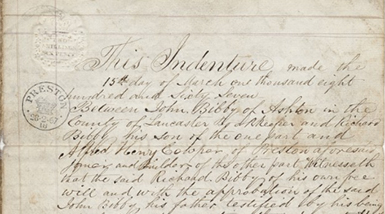
Embracing Change
Fighting for High Standards
Training Up!
At the founding of the Brotherhood of Carpenters union in 1881, delegates passed resolutions on their most pressing issues. They first centered on advocating for shorter hours of work, “in order that labor-saving machinery may not be so extensively employed in reducing the compensation due to skilled labor.”
The resolution was a commitment to fight for better wages, hours and working conditions for carpenters, to improve the quality of their lives. But it was also a response to the pace of change within construction, where industrial production with woodworking machinery was allowing large, mechanized…

If you’ve worked on UBC jobsites for a few years, or even a few months, you’ve seen innovation unfold before your eyes. In a trade that dates hundreds of years, change has been a constant since the UBC was founded. But the pace has never been faster than it is today, whether you are a general carpenter or you work in a specialty craft. Innovation is most evident in the tools you carry and the technologies you and your contractors rely on at the jobsite. Just a small sample of significant advances shows how UBC members have had to adapt and grow with rapid change through our history. Training in skills and safety has been at the heart of our ability to adapt.
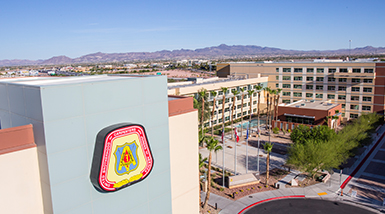
A vision of comprehensive training
and education excellence is realized
It was a proud moment when the Carpenters International Training Center in Las Vegas opened its doors for the first time in 2001. At that time the ITC included 178,000 square feet of training space, a dormitory, dining room and administrative offices—and represented the beginning of a new chapter in the history of our union.
It was a “Major Upgrade,” as Carpenter magazine reported after
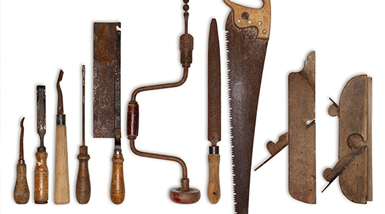
The 36 delegates who gathered in Chicago on August 12, 1881, had no idea that their decision to form a union for carpenters would be remembered or celebrated 140 years later.
Members of their local unions had weathered six long years of brutal economic times. Those who had come before them had organized in their cities and towns, only to fail to hold the gains they made when employers, technology and hard times conquered their individual efforts.
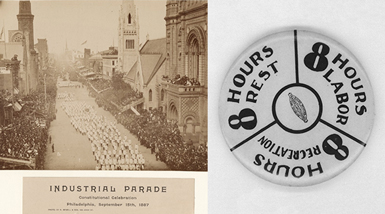
Carpenters Spearheaded the Movement for Shorter Work Hours
Many union members know it is the labor movement that brought big improvements for workers over many decades. Child labor laws, breaks during the workday, overtime pay and weekends without work are just a few examples.
Another is the eight-hour day—the pillar of our working and family lives and a foundation of…
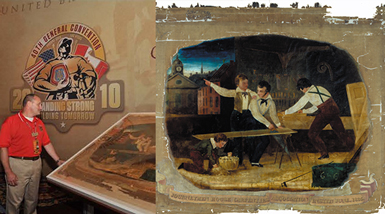
A protest banner from 1835, almost five decades before the UBC’s founding, depicts carpenters pointing to the clock tower as they advocate for a 10-hour workday in Philadelphia. Their slogan was “Six to Six,” as they demanded a shift beginning at 6 a.m. and ending at 6 p.m., with two hours off for lunch and breaks.
Carpenters carried the hand-painted silk banner in demonstrations and parades as the shorter-hours movement grew. It can be seen in a photograph of UBC members as they…
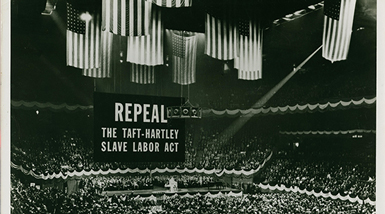
As hard as workers have fought for their rights, we know that what we win can be lost if we don’t stay strong and protect the gains we make. The UBC has been a key player in every major campaign on behalf of workers since our founding in 1881. Here are some highlights.
In the U.S.
Union Rights
More than 100 years after the first carpenters to arrive in the U.S. began organizing, Congress passed the…
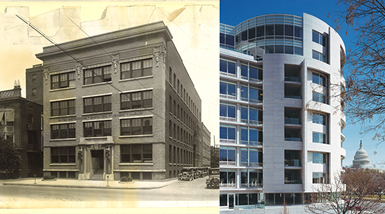
What does it take to build a union….headquarters?
Like most new organizations, the UBC had a lot on its plate in the earliest years. Bringing in new members and representing them, against heavy odds, was top-of-mind. Our first General Secretary, P.J. McGuire traveled relentlessly. He set up shop wherever he could find carpenters to organize.
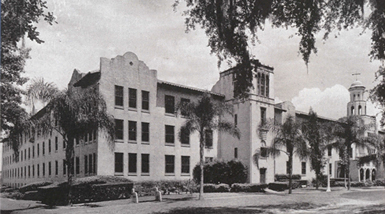
Before Social Security and pensions were woven into the benefits earned by today’s UBC members, the union resolved to help members retire with minimal financial worry. The idea had first been proposed in 1910 by General President Gabriel Edmonston and was realized by General President William L. Hutcheson.
Built in Lakeland, FL, the UBC’s Home for Aged Carpenters was approved by members…
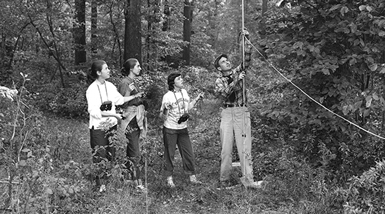
General President William L. Hutcheson retired in 1952 after 36 years at the helm of the UBC. He died the next year.
In tribute to him, in 1955 the UBC helped to purchase a tract of ancient forest land in order to preserve it for conservation and research. The William L. Hutcheson Memorial Forest at Mettler’s Woods in New Jersey remains a preserve and is operated by Rutgers University.
The choice to help preserve Mettler’s Woods was fitting, according to an article in The Carpenter published in September 1960.
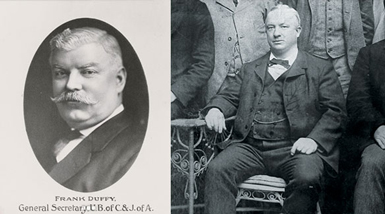
UBC Founder Peter J. McGuire, at right, traveled extensively to organize carpenters and served as general secretary from 1881 to 1902. Succeeding him was Frank Duffy, who served until 1948.
The UBC celebrated its 50th anniversary in 1931 and published historical information in the July edition of The Carpenter that year.
Here are excerpts from “Our Organization,” an article written by General Secretary Frank Duffy, who had succeeded founder P.J. McGuire.
“The Brotherhood of Carpenters and Joiners of America was organized in convention held in Chicago, Illinois, from August 8 – 12, 1881. It was a question at that time whether or not it would be a success as several attempts had been made previously…but without success…